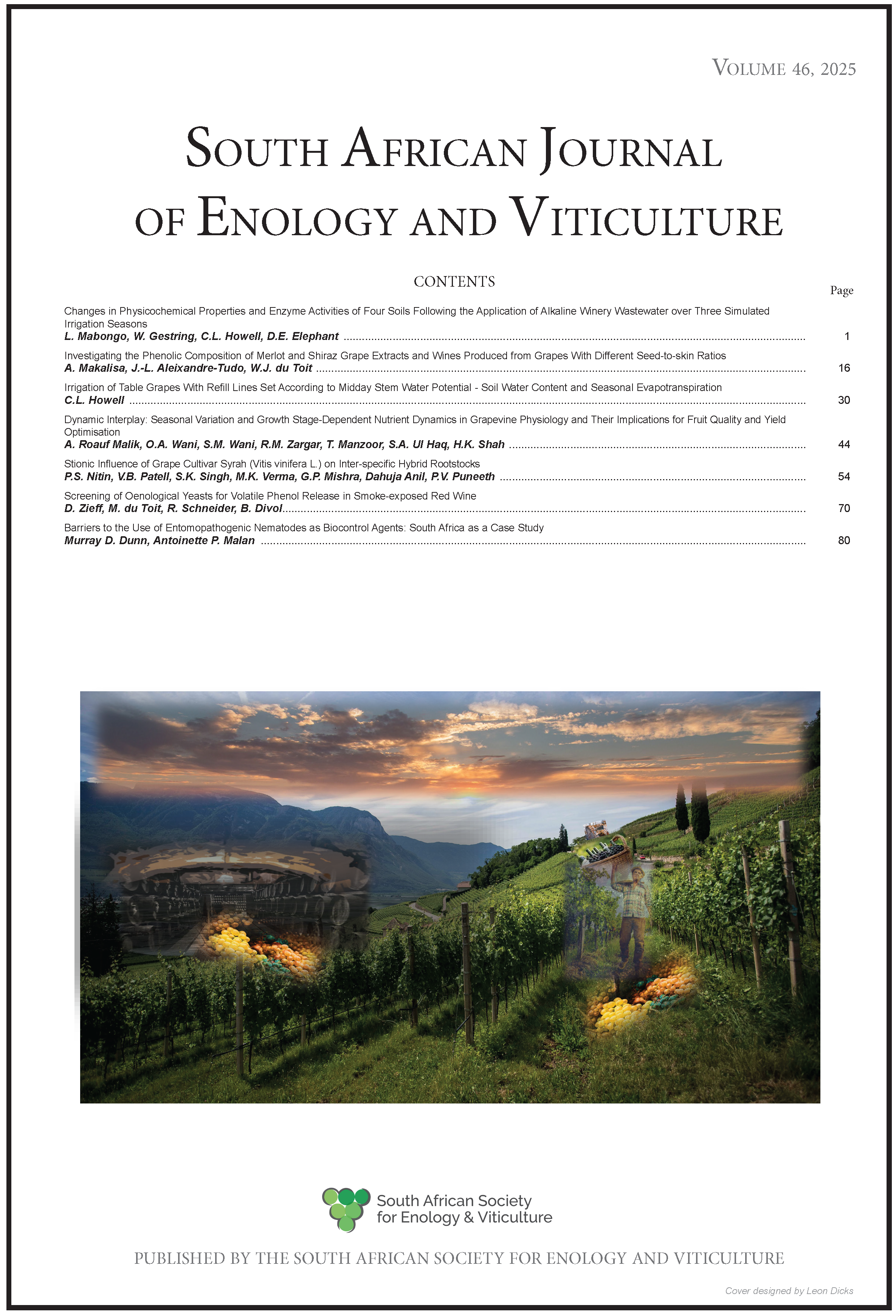Establishing Good Agricultural Practices for the Use of Chlormequat Chloride in Grapes to Improve Vine Vigour, Fruitfulness, and Revision of MRL
DOI:
https://doi.org/10.21548/46-6926Abstract
Chlormequat chloride (CCC), a gibberellin biosynthesis inhibitor, is widely used in vineyards to regulate vegetative growth and promote berry elongation in grapes. However, its low maximum residue limit (MRL) of 0.05 mg/kg poses challenges for grape exports due to stringent food safety regulations. This study aimed to enhance the maximum residue level (MRL) and revise good agricultural practices (GAP) for CCC application to manage grapevine vigour, enhance fruitfulness, and generate residue data for MRL revision and risk assessment. Field trials were conducted across three locations in Maharashtra, India,
during the 2021-2022 and 2022-2023 grape seasons. CCC was applied at rates of 250–2000 g/ha at various growth stages of Thompson Seedless grapevines. Residue analysis using liquid chromatography tandem mass spectrometry (LC-MS/MS) demonstrated that revised CCC treatments significantly reduced shoot length and internodal growth while increasing cane diameter compared to current GAP recommendations. The proposed GAP includes foliar applications of CCC at 1500 g/ha (11-12 leaf stage) and 2000 g/ha (15-16 leaf stage) after foundation pruning, followed by 250 g/ha (3-5 leaf stage) after fruit pruning. This regimen achieved a maximum residue of 0.2 mg/kg, supporting its safety for consumer health. The study will allow growers to achieve higher yields of grapes with better and safer quality subject to revision of the national MRL to 0.2 mg/kg without causing any appreciable health risks to consumers.
Downloads
Downloads
Published
Issue
Section
License
Copyright (c) 2025 South African Journal of Enology and Viticulture

This work is licensed under a Creative Commons Attribution-NonCommercial-NoDerivatives 4.0 International License.
A copyright form will be e-mailed to the corresponding author when the manuscript has been accepted for publication.
In principle, the Author agrees to the following when he/she signes the copyright agreement:
I hereby assign to the SOUTH AFRICAN SOCIETY FOR ENOLOGY AND VITICULTURE (SASEV) the copyright of the text, tables, figures, supplementary material, illustrations and other information (the Material) submitted with the manuscript to be published in SOUTH AFRICAN JOURNAL OF ENOLOGY AND VITICULTURE (SAJEV) (the "Article"). The copyright becomes effective from the date the Article has been accepted for publication in SAJEV.
This is an open access journal, and the authors and journal should be properly acknowledged, when works are cited.
Author's may use the publishers version for teaching purposes, in books, theses, dissertations, conferences and conference papers.
A copy of the authors' publishers version may also be hosted on the following websites:
- Non-commercial personal webpage or blog.
- Institutional webpage.
- Authors Institutional Repository.
The following notice should accompany such a posting on the website: This is an electronic version of an article published in SAJEV, Volume XXX, number XXX, pages XXX - XXX, DOI. Authors should also supply a hyperlink to the original paper or indicate where the original paper (www.journals.ac.za/index.php/sajev/) may be found.
Authors publishers version, affiliated with the Stellenbosch University will be automatically deposited in the University's Institutional Repository SUNScholar.
Articles as a whole, may not be re-published with another journal.
The following license applies:
Attribution CC BY-NC-ND 4.0

